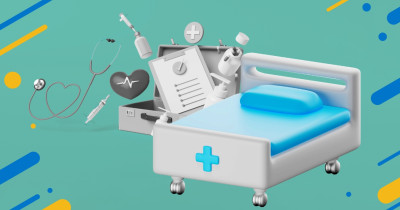5 Lifestyle & financial considerations if you have TB

Last updated on 22nd June, 2021 at 09:51 am
According to World Health Organization’s Global Tuberculosis Report 2020, about 360 000 people were diagnosed with Tuberculosis (TB) in South Africa in 2019 – a 20% increase since 2018. If you have TB, here’s what to know to manage your health and finances.
1. Know the symptoms & get tested
Some of the most common symptoms of TB are persistent coughing for two weeks or longer, a general feeling of unwellness (with or without fever) for two weeks or longer, drenching night sweats and unexpected weight loss and/or tiredness. “If not treated, you could experience other symptoms such as pain when breathing and coughing, and discoloured or bloody sputum (the mucus coughed up from your lungs),” says Associate Professor Klaus von Pressentin of UCT Family Medicine.
If you experience these, get tested by your primary care provider. “Because TB is classified as a PMB DTP (Prescribed Minimum Benefit – Diagnosis Treatment Pair), the diagnosis of the condition confirmed by appropriate testing will be covered by scheme benefits,” says Jeremy Yatt, principal officer at Fedhealth. Prescribed Minimum Benefits, or PMBs, are a set of predefined conditions that form part of South Africa’s Medical Schemes Act. Anyone who is part of a medical scheme, no matter what medical aid plan they’re on, can receive treatment for 270 hospital-based and 25 chronic conditions, and the price of these will be covered in full.
Alternatively, says A/Prof von Pressentin, “You may receive free testing at your nearest primary-healthcare public sector clinic.” Testing normally involves two sputum samples, which are taken for testing. Results should be ready within three days.
Clinical assessment and screening of children with positive adult TB contacts are essential, especially in children aged five years and younger, urges A/Prof von Pressentin. “Following a complete history and clinical assessment by a qualified professional, additional tests such as skin tests and chest X-rays may need to be done to confirm the diagnosis of TB,” he adds.
2. An energy-rich diet is important
TB, as well as some of the prescribed medicine for its treatment, can cause deficiencies in energy, vitamins and hydration. This is why it’s important to adjust your diet and nutrition accordingly to work in tandem with your medical treatment.
3 Key nutrition tips:
Nutrition tip #1: Up your energy-rich food intake
“Ensure that the increased energy needs caused by TB are addressed, as well as enough protein intake to prevent the wasting of body stores (such as the muscle tissue),” suggests A/Prof von Pressentin.
Add these readily available ingredients to your meals to improve their energy and protein content:
• Skimmed powdered milk
• Peanut butter
• Eggs
• Vegetable oil
Nutrition tip #2: Don’t skip supplements
Isoniazid is one of the most commonly used TB medications, but it can also result in a nutritional deficiency of vitamin B6. While it is part of standard care for your healthcare provider to administer a supplement of vitamin B6 daily, there are ways you can boost this vitamin intake through your diet. Add these to your shopping list:
• Yeast
• Wheatgerm
• Pork
• Liver
• Wholegrain cereals
• Legumes
• Potatoes
• Bananas
• Oatmeal
Nutrition tip #3: Manage your appetite
“Poor appetite owing to TB may be addressed by switching from three meals a day to six smaller meals a day,” suggests A/Prof von Pressentin. He also recommends putting effort into the appearance and taste of your meals – these can help to improve your appetite. “Also ensure adequate fluid intake – at least 500-750ml of milk or yoghurt a day can ensure adequate intake of vitamin D and calcium,” he continues. And, as with any healthy diet, include five to six portions of fresh fruit and vegetables a day, and steer clear of alcohol.
3. Your medical aid is legally required to cover initial treatment
However, if you are a medical scheme member, it’s recommended that you obtain your TB medication from State facilities. “The National TB Control Programme can accommodate private patients. This is encouraged due to TB being a notifiable disease and thus it is mandatory that all cases be recorded on the national register,” explains Yatt. If you’re unable to obtain your medication from a State facility, your medical aid can still cover the cost of it as long as you’ve met these criteria:
• You can prove you’ve been added to the national register,
• Your family members have been tested (where applicable),
• You have an allocated supervisor of therapy,
• Your treatment is in line with the most recent State protocols.
Why do I need a supervisor for my therapy?
Drug resistance is one of the greatest challenges in the control and management of TB. Drug-resistant and multi-drug resistant TB occurs when medication is misused or mismanaged, often resulting in the patient not completing the full course of prescribed drugs. This can be due to a low supply of the medication at the facility the patient obtains them from, poor quality drugs being supplied, the wrong dose being prescribed and other factors. Sometimes patients begin to feel better and stop taking their medication before the course of treatment is complete. Directly observed treatment (DOH) is a protocol that aims to prevent this. “Directly observed treatment means that a treatment supporter watches the patient swallowing the tablets, in a way that is sensitive and supportive to the patient’s needs,” according to the National Tuberculosis Management Guidelines 2014. “The treatment supporter may be a healthcare worker or a trained workplace or community health worker, family member or whoever the patient chooses.”
4. Gap cover can ease the financial burden
If you have TB and are unable to visit a State clinic for follow-up consultations to treat and monitor your diagnosis, “appropriate consultations will be covered by medical aid,” says Yatt. If you need to be hospitalised and your medical aid cannot cover these costs, gap cover can cover the shortfall. “Hospitalisation related to TB would rarely lead to surgery and would fall under PMBs,” says Martin Neethling, head of Sanlam Health Insurance and Distribution. “There should not be payment shortfalls where gap cover could pick up the difference between what the provider charges and what the scheme pays.” Worth noting is that you can take out gap cover after having been diagnosed with TB.
Learn more about the need for gap cover to ease the financial burden of hospital bills here.
5. Understand where severe illness cover can help with costs
Severe illness cover won’t cover the costs of treatment for TB itself, says Dr Helen Weber, medical adviser at Sanlam. “But there are potential events that can be claimed for if there are complications of TB.” These include, but aren’t limited to:
• Complications of the lung
• Chronic irreversible lung disease with moderate or severe impairment
• Removal of the lung
• Vision loss potentially in the case of ocular TB
To be able to claim for a catch-all benefit, your insurer would assess the severity of the disease and whether your daily activities are affected. “There are strict contractual criteria that need to be met for a catch-all claim – the case must be so severe that the member is unable to do daily activities. We also look at the clinical picture,” says Dr Weber.
Plan financially for different outcomes
Regardless of your TB status, sound financial planning can ensure you and your family’s needs are taken care of in the event of death, disability or severe illness.
According to Hedwig Robertson, chief underwriter at Sanlam Individual Life, you can still get severe illness or disability cover after a TB diagnosis, “but only if you are fully recovered and have completed six months of treatment,” she says. “To consider cover after six months [Sanlam will require a] test for lung function. If normal, [Sanlam will] accept (depending on other medical impairments), or a loading can apply depending on the person’s incapacity,” she adds. A loading refers to the extra mortality estimation that will result in an increased premium, to accommodate the higher-than-normal risk associated with the health condition. Therefore, you shouldn’t experience discrimination as a result of having had TB.
Reality Health and Plus members get up to 30% discount on risk cover premiums including life insurance, disability cover and income protection. Learn more here.
Review your budget
To get yourself on track to physical and financial health, a comprehensive budget covering all streams of income and expenses is key. Discuss your risk cover needs and those of your dependants with a qualified financial planner to understand how your budget will be impacted by these, and adjust it accordingly.
Use this guide and template to draw up a budget that works.
Sanlam Life Insurance Limited is a Licensed Financial Services Provider.
Want to learn more?
We send out regular emails packed with useful advice, ideas and tips on everything from saving and investing to budgeting and tax. If you're a Sanlam Reality member and not receiving these emails, update your contact details now.
Update Now







